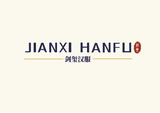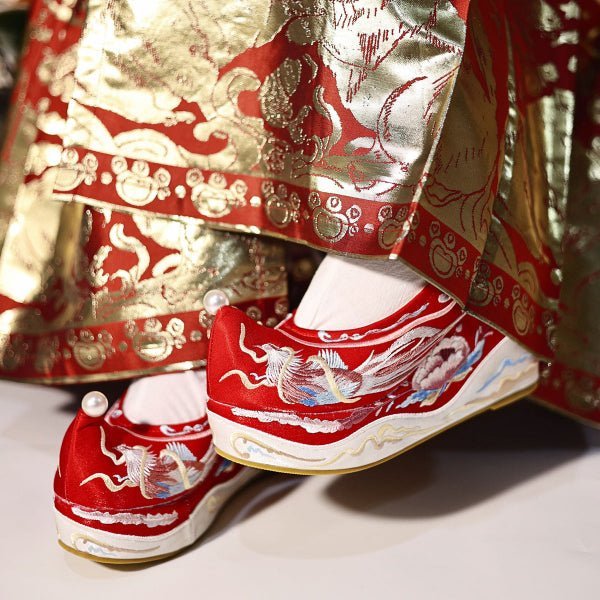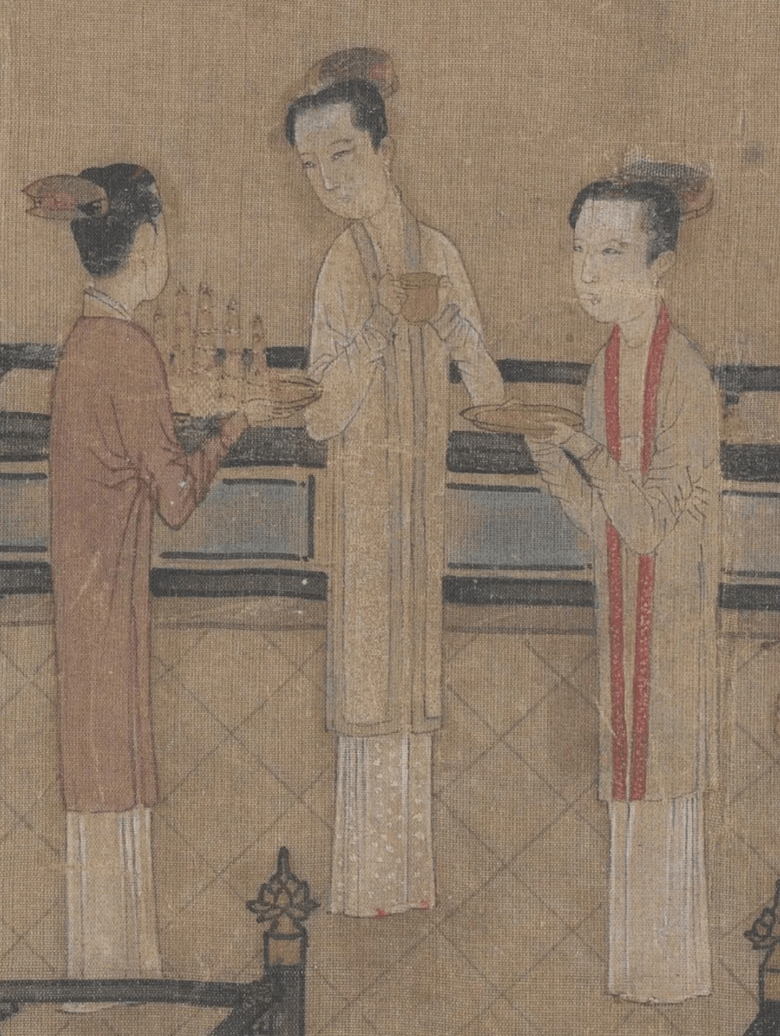Das Qipao (Cheongsam) ist ein traditionelles chinesisches Kleidungsstück. Der Einfachheit halber wird es im Folgenden „Qipao“ genannt. Seine Entwicklung ist nicht nur eine Geschichte der Kleidung, sondern auch ein Zeugnis der chinesischen Gesellschaft und Kultur. Von der ursprünglichen mandschurischen Bannerkleidung zu einem weltweit beliebten orientalischen Symbol durchlief das Qipao viele Veränderungen, die jeweils eng mit seinem historischen Kontext verknüpft waren. Heute führe ich Sie durch seine drei Phasen der Entwicklung – von der Qing-Dynastie über die Republik bis in die Neuzeit – und enthülle die kulturelle Bedeutung dieses traditionellen chinesischen Kleidungsstücks.
Qing-Dynastie: Ursprünge und Merkmale des Mandschu-Bannerkleides
Der Prototyp des Qipao geht auf die traditionelle Kleidung der Mandschu aus der Qing-Dynastie zurück, „Yijie“ (衣介) – ein langes Gewand, das von allen getragen wurde, unabhängig von Geschlecht oder Alter. Als reitendes und Bogenschießendes Volk entwarfen die Mandschu ihre Kleidung nach praktischen Gesichtspunkten: ein runder Kragen, schmale Ärmel, lange Seitenschlitze und ein vierteiliger Schnitt mit breiten Vorder- und Rückseiten, der das Aufsteigen und Pfeileschießen erleichterte. Die einzigartig gestalteten „Pferdehufmanschetten“ (马蹄袖) spendeten Wärme und wurden, heruntergelassen, zu einer Geste des Respekts gegenüber Älteren – ein Anblick, der jedem vertraut ist, der historische Dramen aus der Qing-Ära gesehen hat.

▲ Das Bild zeigt die Hufeisenärmel einer authentischen offiziellen Qing-Robe
Die Frauenrobe der Qing-Dynastie war locker und gerade, die Körperform verbergend. Es wurde über langen Hosen getragen, oft aus schwerem Brokat mit aufwendigen Verzierungen. Diese Kleidung folgte strikt der feudalen Hierarchie: Adlige Frauen und kaiserliche Gemahlinnen durften ein Qipao tragen, das über ihre Füße reichte, während dies gewöhnlichen Bannerträgern nicht gestattet war. Nur bei der Heirat durfte eine gewöhnliche Bannerträgerin ein bodenlanges Qipao tragen. Im Laufe der Zeit, als sich die Kulturen der Mandschu und Han vermischten, begannen die Qipaos, aufwendig bestickte Verzierungen an Kragen, Vorderseite und Manschetten aufzuweisen und es entwickelte sich sogar der extravagante Stil der „ Achtzehn Einlagen “ (十八镶).

▲ Dieses Bild zeigt die traditionelle Handwerkskunst von „Eighteen Inlays“
Republikanische Ära (1912–1949): Die Ost-West-Fusion und das Goldene Zeitalter des Qipao
Nach der chinesischen Revolution von 1911 , mit dem Sturz der feudalen Monarchie und dem Zustrom der westlichen Kultur, erlebte das Qipao eine revolutionärer Wandel. In den 1920er Jahren wurde Shanghai zum Zentrum der Qipao-Innovation. Klassische Schneidereien wie „Zhu Shunxing Tailor Shop“ brachten Generationen chinesischer Bekleidungshandwerker hervor, darunter auch Herrn Chu Hongsheng , der der Nachwelt ikonische Kleidungsstile hinterließ. Sie waren die ersten, die neue Designs auf den Markt brachten, die die geschwungenen Silhouetten westlicher Damenmode mutig aufgriffen. Taillenbetonte Designs kamen auf und das Qipao entwickelte sich allmählich so, dass es sich eng an die Körperform anschmiegte.
Wie Eileen Chang anschaulich beschrieb in Eine Chronik des Kleiderwechsels : „Nach der Vereinigung der fünf Rassen unter einer Union [Republik] nahmen Frauen im ganzen Land plötzlich einstimmig das Qipao an. Dies geschah nicht aus Loyalität gegenüber der Qing oder um die Restauration zu fördern, sondern weil Frauen bewusst Männer nachahmen wollten.“

▲ Das Bild zeigt Bildmaterial aus dem goldenen Zeitalter der Qipao-Entwicklung im Jahr 1930.
Die 1920er bis 1940er Jahre waren geprägt von der Qipao goldenes Zeitalter, mit äußerst vielfältigen Stilvarianten:
-
Die Saumlängen schwankten von knielangen kurzen Schnitten bis hin zu „bodenlangen Qipao“ (扫地旗袍).
-
Ärmel von lang auf ärmellos gekürzt.
-
Die Schlitze reichen von dezent tief bis hoch zum Oberschenkel.
-
Die Kragen entwickelten sich von hoch aufragenden „Barrenkragen“ (元宝领), die bis zu den Ohren reichten, zu Modellen mit niedrigem Kragen oder sogar ohne Kragen.
In dieser Ära entstanden auch zwei verschiedene Stile: die Pekinger Schule (京派) und die Shanghai-Schule (海派) . Das Peking-Qipao behielt den traditionellen geraden Schnitt mit üppigen Verzierungen bei. Das Shanghai-Qipao übernahm westliche dreidimensionale Schneiderkunst, betonte die weiblichen Kurven und führte schließlich den nationalen Trend an. Filmstars wie Hu Die (Butterfly Hu) und Ruan Lingyu machten das Qipao noch beliebter. Hu Dies innovativer „Schmetterlingsfalten“-Saum schuf sogar einen einzigartigen „Hu Die Qipao“-Stil (胡蝶旗袍).

▲ Das Bild zeigt Hu Die, die erste Generation chinesischer Filmstars, in einem Cheongsam.
Moderne Ära: Kulturelles Symbol und globaler Einfluss von Qipao
Nach 1949 nahm das alltägliche Tragen von Qipao auf dem chinesischen Festland ab, aber sein Status als Symbol der traditionellen chinesischen Kultur wurde stärker. In Film und Fernsehen wurde das Qipao zum Schlüssel zur Darstellung östlicher weiblicher Schönheit. Maggie Cheungs Qipao sieht aus wie In der Stimmung für Liebe wurde zur Ikone. Der Qipao-Standard „Neun Kurven und drei Bögen“ (九翘三弯) – der die Kurven von Kopf, Schultern, Brust, Hals, Taille, Beinen, Hüften, Händen und Füßen zur Geltung bringt, ergänzt durch die Bögen von Kragen, vorderer Öffnung und Saum – stellt die Schönheit der östlichen weiblichen Form perfekt dar.

▲ Das Bild zeigt Maggie Cheungs Kostüme im Film *In the Mood for Love*.
Zeitgenössische Qipao mischen modernere Designelemente und bewahren gleichzeitig ihre kultureller Kern. Bei großen internationalen Veranstaltungen wird das Qipao oft gewählt, um die chinesische Kultur zu repräsentieren. Die Modewelt lässt sich ständig von traditionellen Qipaos inspirieren, um Stücke zu kreieren, die klassische und moderne Stile vereinen. Das Qipao ist nicht nur eine „Oberfläche“ der Modernität; es fördert auch die Verschmelzung von Tradition und Moderne, einheimischer und ausländischer Kulturen inmitten ihrer Konflikte.

Am Ende Vom mandschurischen Reitanzug zur republikanischen Modeikone und heute zu einem weltweit anerkannten Kultursymbol – die Entwicklung des Qipao spiegelt Chinas Weg von der Tradition zur Moderne wider. Jede Transformation spiegelt den Geist ihrer Epoche wider: die Hierarchie des Feudalismus, die Frauenbefreiung der republikanischen Ära und das kulturelle Selbstbewusstsein des globalisierten Zeitalters. Heute ist das Qipao mehr als nur ein Kleidungsstück. Es ist zu einem wichtigen Symbol chinesischer Ästhetik geworden. Mit seinen klaren Linien, seiner subtilen Sinnlichkeit und seinem orientalischen Charme erzählt es der Welt weiterhin Chinas Geschichte.
Kauflink
Klicken Sie hier, um chinesische Kleidung mit 15 % Rabatt zu kaufen



